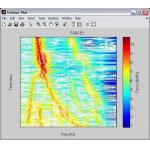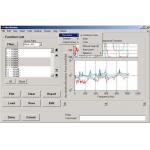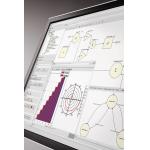Latest News
May 23, 2007
By DE Editors

May 23, 2007
A relative of mine uses Excel as his word processor. I once asked him if he used Excel for plotting maps for his bike trips. Puzzled, he answered that it was a silly question because Excel is not designed for that job. I responded that an annealing furnace is not designed for reheating lunch but, if you’re quick about it, can do a heck of a job. He was not amused.
Yeah, you guessed it, he’s an engineer. What is this thing with engineers and Excel? It’s a great accountant’s program. It is not an engineering application. It gags on a whole lot of test, simulation, and other engineering data, and it just cannot cope with the fact that engineering data has all sorts of attributes. This is where ATA Engineering and its IMAT software suite earns your attention.
IMAT is more than its name — Interface between MATLAB, Analysis, and Test. To make a long story short, IMAT lets you directly import your test and simulation data into MATLAB where you can beat on it with MATLAB’s engineering-targeted tools. IMAT retains all your data attributes, so you can just begin postprocessing, comparing tests versus analysis results, and so forth for, say, your Nastran and Abaqus results in MATLAB; and pretty much right away.
Is that cool or what? You will save hours of time using IMAT because it will get your data into a leading engineering toolbox instead of the accountant’s application. And it will do this directly with next to no fussing around.
See today’s Pick of the Week write-up for more on IMAT. From the write-up, you can download a PDF for complete details. And take a minute to go to the IMAT site to see some nifty screen shots of what IMAT can do for you.
Thanks, Pal. – Lockwood.
Anthony J. Lockwood
Editorial Director, Desktop Engineering
IMATv2 Released
Interface lets you to import CAE and test data into MATLAB.ATA Engineering, Inc. (ATA; San Diego, CA) has announced version 2.2 of its IMAT suite utilities for importing CAE and test data into MATLAB from The MathWorks (Natick, MA). IMAT (Interface for MATLAB, Analysis, and Test) is made up of the IMAT Toolbox and three vertical solutions — IMAT+, IMAT+Testkit, and IMAT+RTK — addressing vertical application needs.
 |
| IMAT v2.2 |
IMAT Toolbox serves as the heart of the IMAT suite. It serves as your framework for importing Abaqus, I-deas, MSC.Nastran, and NX Nastran FEA (finite element analysis) simulations as well acquired test data into the MATLAB environment. Once your data are in MATLAB, you can leverage MATLAB’s full programming and mathematical functionality for such operations as matrix multiplications and repetitive data calculations.
IMAT Toolbox imports your data with all of its attributes, such as mode shapes, time histories, and spectra, retained for use in MATLAB. In total, IMAT preserves some 40 data attributes for MATLAB, and FEM entities such as coordinate systems, nodes, elements, and tracelines can also be imported. IMAT provides utility functions that allow for coordinate transformations and plotting, enabling you to display and animate mode shapes as well as create AVI files.
 |
| IMAT v2.2 |
IMAT imports test data universal file formats (.unv) into MATLAB, and IMAT supports files written from Brüel & Kjær’s I-deas Pro test software. Common test data attributes including reference coordinates, response coordinates, abscissa type, ordinate type, number of data points, and resolution are supported. These attributes are associated to the X,Y data through the IMAT object model.
The IMAT+ vertical application provides advanced functionality and features that for working with Abaqus and Nastran simulation data. It also has a new full-featured GUI for plotting and editing functions.
The IMAT+Testkit is a collection of utilities that offers functionality to help test engineers with test planning and post processing. IMAT+Testkit includes modal (vibration) testing utilities for selecting the optimal accelerometer and exciter location, procedures for reducing a full FEM down to the test measured degrees of freedom, as well as curve-fitting routines for extracting shapes from the test data.
 |
| MATRIXx 8.0 |
The IMAT+RTK application helps you obtain response characteristics and discover insights into the mechanics of rotating events. This tool applies Vold-Kalman filtering techniques to order-tracking of rotational events, and it uses time-history data files from simulations or real-time data collections to process and visualize the spectral properties of events.
For full details on IMAT v2.2 and to register for a demo version, click here. Click here to download a small (550KB) PDF on IMAT.
Subscribe to our FREE magazine, FREE email newsletters or both!
Latest News
About the Author
DE’s editors contribute news and new product announcements to Digital Engineering.
Press releases may be sent to them via [email protected].






